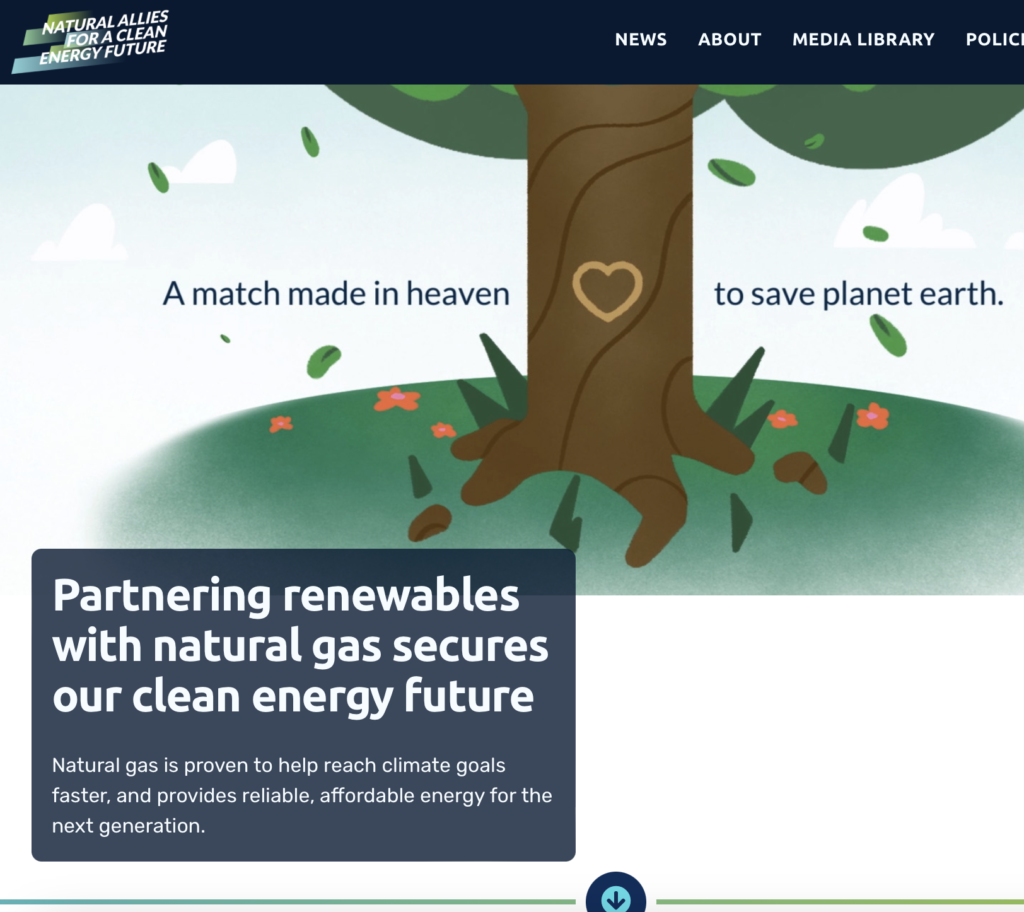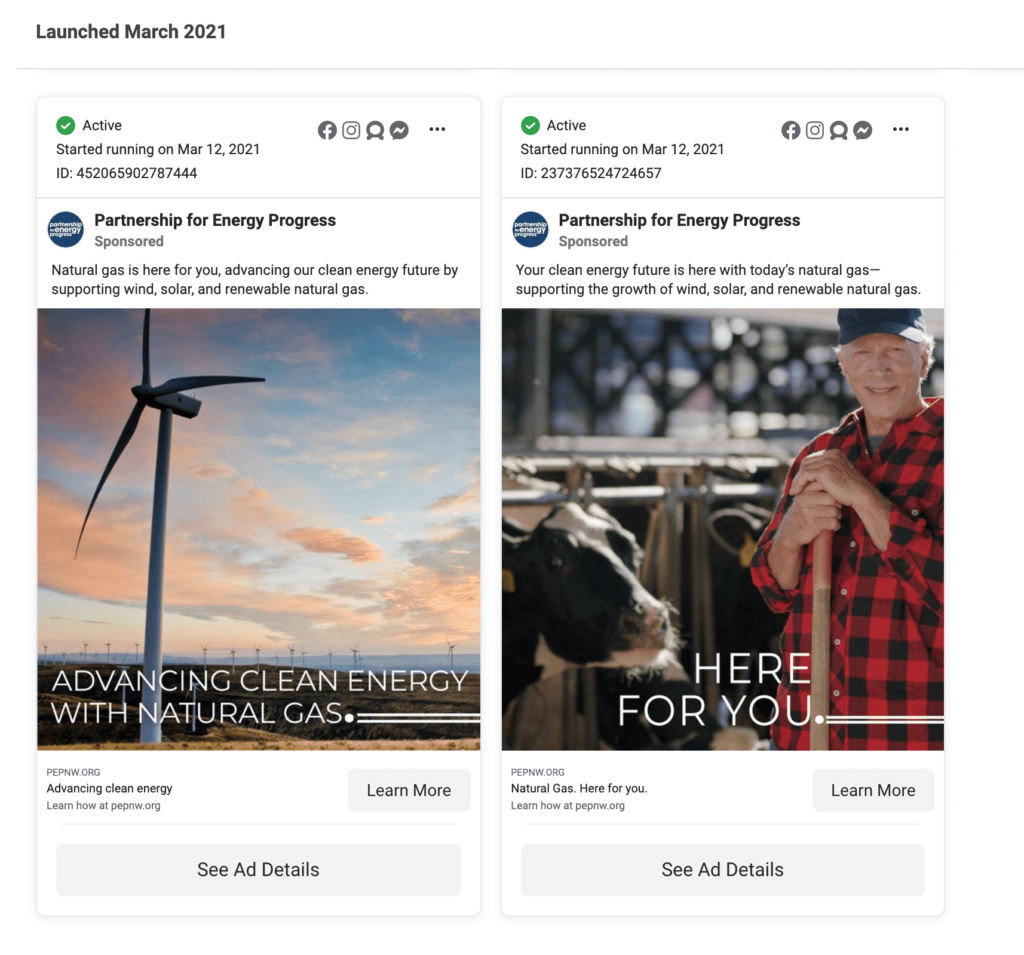At this point, most of us can spot run-of-the-mill greenwashing: A product saying it uses “all-natural”, packaging touting using 10% less plastic, a company claiming they offset their climate pollution by planting trees — never mind if those trees actually live long enough to offer the benefits of forests.
Advertisers have made tiny, marginal changes to products with minimal real-world changes to their environmental impacts. Misleading marketing has been around for decades. But we’re going to talk about something a little more nefarious here: Industry-funded “front groups” designed to block climate protection and pollution prevention policy under the guise of being grassroots or community groups. It’s sort of like the activism equivalent of a shell company.
Here are some tips on spotting a fabricated front group that exist to protect corporate profits and stall climate action, all while using the language of real pro-environment and community health organizations.
Front group–spotting Tip #1: Does the group’s name mean anything, or is it word salad?

You won’t see Exxon pushing for fossil-friendly policies in public using their own name. If you take one look at this list of groups who have been caught trying to stall local climate policy, you’ll see a bunch of names that sound like they were churned out by AI or in a corporate office somewhere — because that’s pretty much the case.
NW Coalition for Energy Choice. Natural Allies for a Clean Energy Future. Californians for Balanced Energy Solutions. They all tend to use words that poll well with the general public — values like choice, freedom, renewable power, and so on. Of course, some of these words are used by actual pro-clean energy groups; that’s what makes these groups truly wolves in sheeps’ clothing. But if you dig into their memberships, the front group is largely made up of oil and gas companies or utilities. That takes us to…
Tip #2: Google the name, follow the money
Let’s start with a Pacific Northwest example: a public relations campaign calling itself Partnership for Energy Progress. This group mostly is funded by natural gas utilities and lobbying groups such as Northwest Gas Association. As you might notice, its name is word salad. Only by looking at their ads and website can you see that they’re pumping out content to make people think that gas — a fossil fuel — is in the same category as solar and wind power.
They promote the myth that “renewable” natural gas — methane captured from landfills and industrial farms — is replacing fracked gas. The truth is the Washington State Department of Commerce (not exactly a climate action advocacy group) found that “renewable gas” could only replace a max of 3 to 5 percent of the state’s existing gas use — and often at a higher cost to ratepayers than simply using electricity.

It’s challenging to follow the money on your own, unless a group has donated to a political campaign or ballot initiative (to see if they have, look at a campaign’s donors on Washington’s Public Disclosure Commission database).
You can also look at how “issue-based” advertising money has been spent on Facebook and Instagram by searching a suspected front group by name in the Facebook Ad Library. This allows you to look at what exact messages they’ve paid to show people to muddy the water. For example, Partnership for Energy Progress has spent tens of thousands of dollars promoting polluting gas appliances while using imagery of windmills and solar panels since 2019.
The good news is, at least now, if you search Partnership for Energy Progress in Google, much of what comes up is news outlets exposing their misleading campaigns to keep Washingtonians hooked on polluting gas. A simple search can go a long way, but of course you might need to dig deeper if it’s still not clear.
Tip #3: Did the front group seem to pop up out of nowhere?
In general, if there is very little information on the group, you should be a tad suspicious. Most industry-funded groups — especially ones opposed to a specific project, such as a wind power installation — pop up almost overnight.
An example from the east coast: as New Jersey set out to expand renewables to meet its own climate goals, a group called “Protect Our Coast New Jersey” suddenly showed up in opposition to the projects. Their reason? Unfounded claims that offshore wind was going to kill whales.
New Jersey plans to run on 100% renewable electricity by the middle of the century. To hit that goal, there is a road map to install 11 gigawatts of offshore wind power by 2040, enough to power millions of homes and businesses… Groups linked to the fossil fuel industry are fighting it, including replicating the tactic seen in New Jersey: posing as environmentalists and professing concern for whales, despite a lack of evidence that offshore wind is a major risk for marine life—especially in comparison to the known threat of climate change.”
(Source)
You won’t see front groups suddenly advocating for whales in situations where renewable energy isn’t the issue at hand. Front groups use a combination of public relations tools and legal assistance — funded by individuals or foundations with connections to fossil fuel companies — and firing up a select few locals who may oppose wind power (in this case) for their own reasons. Maybe they don’t like the view of windmills, or maybe they’ve bought into the misinformation provided to them by wealthy interests seeking to protect their investments in oil and gas. The blend of industry money boosting the voices of a few misguided advocates results in one thing: a boon to overtly industry-friendly policies and, subsequently, protecting their profit margins.
Tip #3.5: There are also decades-old fossil fuel lobbying groups
On top of faux-local front groups, national and state-level organizations have lobbied against environmental protections and clean energy projects for a long time. These are groups who are largely funded by their members — the oil and gas companies that are more household names, like Chevron and Shell. And they are heavy hitters, outspending clean energy marketing 27 times over. A few you might see include:
- American Petroleum Institute
- Western States Petroleum Association
- American Gas Association
- Northwest Gas Association
- Propane Education and Research Council
The best thing you can do to prevent misinformation? A little research!
Media literacy is an essential skill that isn’t taught to most people — it’s no wonder fossil fuel companies take advantage of that in a fast-changing information landscape where the highest bidder can reach the most eyeballs.
Before you re-share an article or social post, double check the organization or author where the content originated, and consider these tips. Make sure you and your online friends are not unwittingly spreading the talking points of an industry front group. You’re on the front lines of calling out misinformation — your friends and family trust you, and you can use that trust for good!
RE Sources has offered ways to take action in Northwest Washington for effective climate and energy policy, forest protection, pollution prevention, and more for over 40 years. Sign up for Action Alert emails to help make our region a place we can thrive for years to come.
